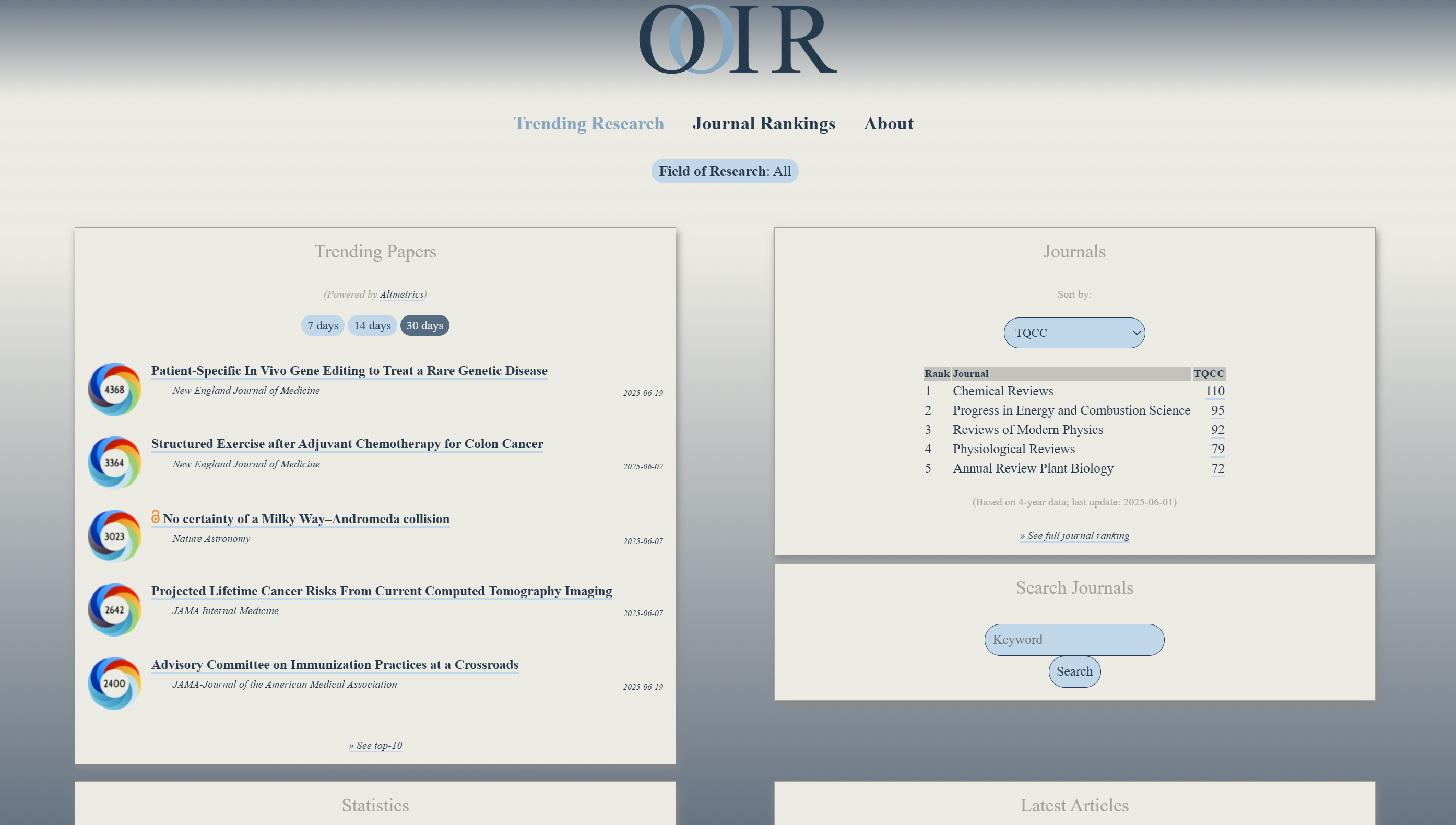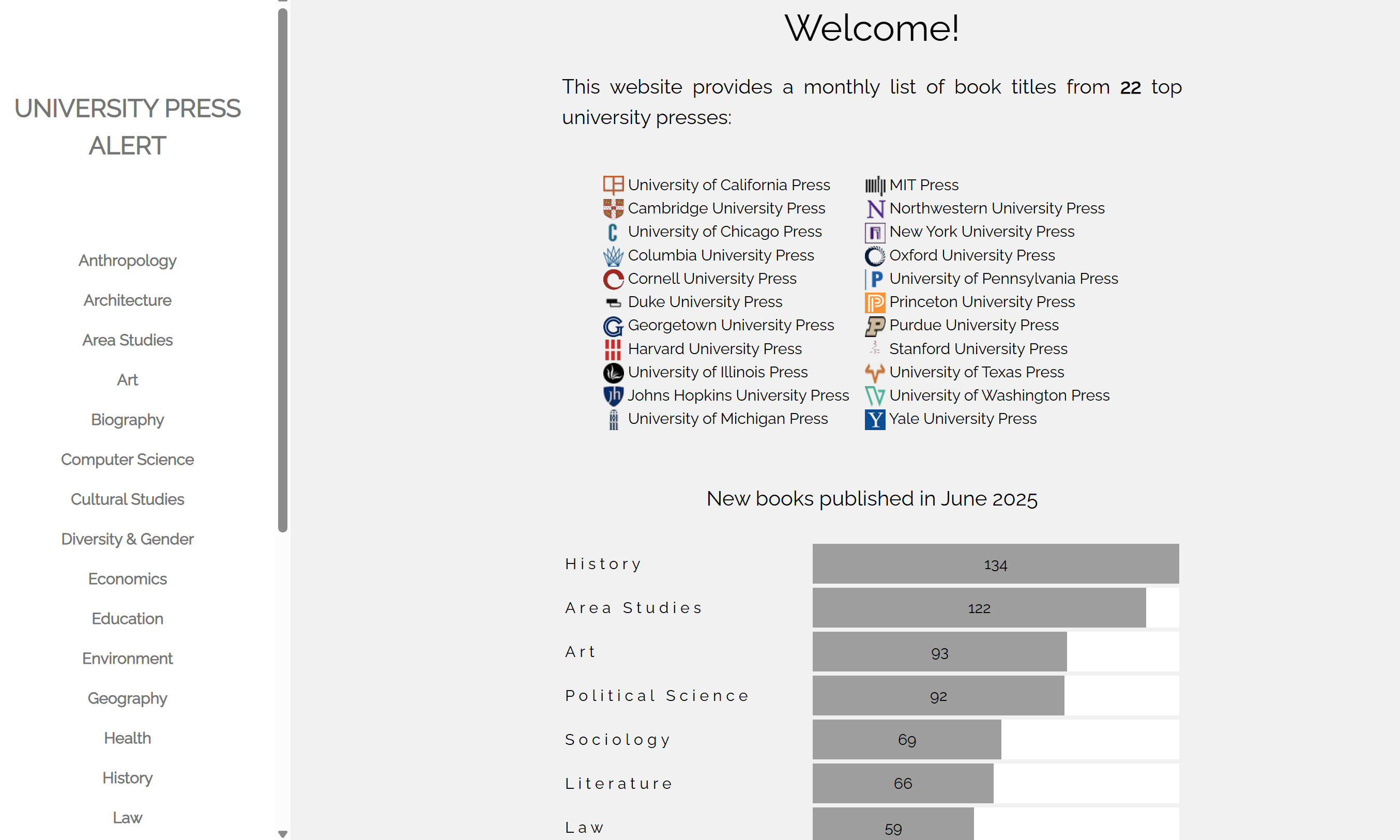Aims
Think Tank Alert pursues two primary goals. First, we provide a continuously updating feed of the latest reports from a diverse range of think tanks worldwide.
Second, Think Tank Alert quantifies the impact of think tanks through a citation index built on bibliometric indicators. This is the foundation of our think tank ranking.
Statistics
Think Tank Alert currently monitors 82 think tanks – 39 actively and 43 passively. As of 17 October 2025, we have analyzed 88.975 articles published since 2020, written by a total of 31.131 distinct author-think tank-combination.
On average, a think tank published 389 reports per year between 2020 and 2024. The median is 138, with a standard deviation of 590, which indicates quite an uneven distribution. Brookings stands out in particular: in 2020 alone, it published 3.880 reports. Besides Brookings, only the Wilson Center, RAND, CSIS, and the Heritage Foundation have exceeded 1.500 publications in any single calendar year.
For comparison, the Australian Institute of International Affairs (AIIA) published 504 reports in 2024, the Konrad Adenauer Foundation (KAS) 258, the Lowy Institute 152, Bruegel 118, and the China Institute of International Studies (CIIS) just 7 (English-language) commentaries (of course, CIIS was way more active than that, but we only collected longer-form English-language reports).
One cannot rule out occasional data-collection errors or omissions, and the dataset may reflect certain biases, such as a focus on English publications or a limited sample of think tanks (see the methods section below). Data collection is unfortunately messy, given that there is no single way a think tank report is structured, and mistakes happen which we continuously try to address. Yet, despite occasional errors, our data reveal meaningful patterns in the aggregate, including long-term trends and annual publication peaks across the broader think tank landscape.
Who is Behind Think Tank Alert?
Think Tank Alert was developed primarily during June 2025, and launched on 1 July 2025.
It was created and is run by Andreas Nishikawa-Pacher (based in Vienna, Austria). He has a background in International Relations and in Scientometrics (e.g., see his Google Scholar profile).
The concept for Think Tank Alert emerged during a brainstorming session for a research project exploring semantic and topical trends in world politics. The idea was that, in the aggregate, the discourse of think tanks could reveal emerging themes of the diplomatic system (this idea was inspired by Niklas Luhmann).
Similar platforms developed by Andreas include OOIR (which tracks trending scientific papers) and UniPressAlert (showcasing the latest books from top university presses, organized by discipline).
Privacy and Data Protection
This website itself does not set or collect cookies. However, please be aware that third-party services, such as Google Analytics, may independently do so.
In the process of collecting links to think tank reports, this site stores the names of the respective authors. Additionally, email addresses (and optionally, names) of newsletter subscribers are stored in a database.
Under the EU's GDPR (General Data Protection Regulation), any natural person has a right of access by the data subject (Article 15 GDPR), right to rectification (Article 16 GDPR), right to erasure (Article 17 GDPR), right to restriction of processing (Article 18 GDPR), right to data portability (Article 20 GDPR) and right to object (Article 21 GDPR), provided that these rights are exercised on the basis of the legal provisions in the specific case. To assert these rights, please send an e-mail to contact@thinktankalert.com.
If you have any questions or concerns regarding data protection on Think Tank Alert, feel free to contact Andreas via contact@thinktankalert.com.
Methodical Details
Sample
Think Tank Alert utilizes two distinct samples of think tanks: an "active" sample and a "passive" sample.
The active sample consists of a narrower selection of think tanks from which Think Tank Alert actively fetches their latest articles. In addition, their backlinks within these articles are also analyzed so as to observe which other think tanks they cite.
While the active think tanks frequently cite each other, they also link to external think tanks (i.e., to think tanks that are not in the initial sample of Think Tank Alert). If an external think tank was cited more than 20 times within the timeframe of January 2024 to June 2025, it is then included in the wider passive sample. With regards to these (passively observed) think tanks, Think Tank Alert does not actively fetch their articles, and it does not analyze their outgoing citations. However, Think Tank Alert does count how often they are cited by the active sample, and also considers their scholarly metrics, which allows for their (grayed out) inclusion in the think tank rankings.
The decision not to actively process think tanks in the passive sample is often due to technical limitations.
If you represent a think tank not currently in our active sample but wish to be included, please get in touch!
Ranking Methodology
The TTA Score is a composite indicator based on inter-think tank citations and scientific influence.
A given think tank's TTA Score in the ranking is derived from two primary metrics: think tank interlinkages and scientific citations. Each of these metrics can be further broken down into two sub-metrics.
Think Tank Interlinkages
This metric quantifies backlinks from one think tank to another. It considers two distinct aspects:
(a) Backlinks to Recent Articles: If a think tank report cites another think tank's article published within the past four years (e.g., a 2022 article cited in 2025), the cited think tank receives 0.5 points. However, a single citing article can contribute a maximum of just one observation (i.e., 0.5 point) to the cited think tank (e.g., three links within one article still count as only one backlink). Furthermore, any one citing think tank can bestow a maximum of five points on a cited think tank within this "recent backlink" metric.
(b) Other Backlinks: If a think tank report links to a URL of another think tank that is not part of that cited think tank's past four years' article sample, the cited think tank receives 0.1 points. Similar to the above, a single citing article can only contribute one observation (0.1 point) to the cited think tank, and here, a maximum of one point can be bestowed per citing think tank onto the cited entity.
Note that we may have difficulties with extracting links from PDF reports.
Scientific Citations
This metric incorporates two measures of a think tank's scientific influence:
(a) Two-Year Mean Citedness: This metric, roughly equivalent to the "impact factor" applied to scholarly journals (based on a product by Web of Science), represents the average number of citations an article from an institution garners within a two-year timeframe (but with nuances: it is a division between a citation count and a publication count, namely: the number of publications in the two years prior to the current year is in the denominator, while the number of citations received by these publications in the year prior to the current year is the numerator). For the present purposes, the two-year mean citedness is sourced from OpenAlex. A score is assigned only if the think tank possesses a Research Organization Registry Identifier (ROR ID); otherwise, the score is assumed to be 0. The two-year-mean-citedness value is added directly to the total score without any algorithmic weighting.
(b) H-Index: The H-Index reflects the highest possible number with regards to which the following statement is true: the think tank has h scientific publications which have been cited at least h times (referring to outputs in peer-reviewed articles across all years, regardless of recency). This number is also sourced from OpenAlex and is only considered if the think tank has a ROR ID. One-tenth (0.1) of that H-Index value is added to the total score.
Contact
Andreas Nishikawa-Pacher
1120 Vienna, Austria
Email: contact@thinktankalert.com

